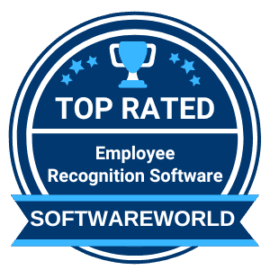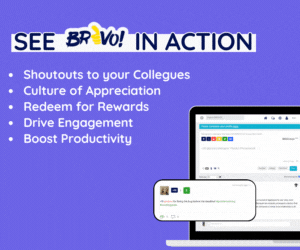
Finally, employee experience program have become a priority for companies worldwide.
And for that, the ‘great resignation’ is to be credited since it made businesses become focused on
on employees and learning what motivates them to change professions, move to different industries, or leave the workforce entirely.
Relevantly, MIT Sloan School of Management also examined a large amount of data from a variety of sources to determine the best indicators of turnover during the Great Resignation: Wages and employee unhappiness were at the heart of the majority of the discussions, while remuneration ranked 16th on the list of turnover factors.
In context to the afore-mentioned survey, organizational culture, specifically a toxic one, was found to be ten times more influential than remuneration in predicting turnover.
Considering how important employee experience has become, this blog post brings you everything you need to know before coming up with a relevant program.
What is meant by employee experience?
Everything a worker learns, performs, observes, and feels from the time they look at your job opportunity to the time they leave your organization adds to their employee experience.
To perfect employee experience management, your company must listen to its employees at each stage of the employee lifecycle. It should also determine what matters most to them to develop individualized and personalized experiences.
Employee satisfaction is critical to business performance. It is because maintaining customer experience initiatives, upgrading products, and developing a strong and respected brand requires the help of your staff.
Finally, their positive and negative experiences will influence how hard they work, how much they interact, and are interested in increasing their individual and organizational performance.
Why is employee experience important?
A variety of factors, including social media, shifting demographics, and increasingly uncertain economic conditions, have contributed to the change from traditional employee engagement to a more comprehensive approach to employee experience.
a) The younger generation wants more opportunities to express themselves.
Businesses must gain a better knowledge of a generation that feels, thinks, and behaves differently than previous generations.
b) The competition for talent is tougher than ever before.
Companies around the world inevitably need to develop an employee experience program.
c) Organizations are changing quicker than ever.
Digitization and economic forces are leading organizations to decline and (at the same time) expand at a faster rate.
e) Employees today expect to be treated as individuals.
An employee today would expect you to consider them as an individual person, just as they do when interacting with premier B2C brands.
f) The use of social media platforms today has led workplaces to become more transparent in order to defend company and brand reputation.

Because of the rise of social media and the possibility for negative evaluations to go viral, employee experience programs have become more important than ever.
To conclude, no doubt that the significance of employee experience today has led to the need to create employee experience programs.
How to improve employee experience?
If you are not deciding to combine all of your workplace, HR, and management processes to focus on the employee experience, it may cause you a relevant setback.
There are a few elements that will shape a new hire’s experience as they progress through their employee journey until their eventual exit from your firm, which will help make your employee experience program successful.
The three commonly identified conditions that help in your employee experience model include culture, tech environment, and physical space. And explain them one after the other as follows:

Culture
It is difficult to define it. Because each company’s culture is unique, but you can understand it as what the executives of a company say it is. Furthermore, you can also understand it as an organization’s mission, beliefs, and practices.
Additionally, it’s a combination of your style of leadership and organizational structure, as well as your sense of purpose and the personalities of the people that work with you.
Organizational culture is the atmosphere you get when you walk into the office. It can motivate or demotivate, energize or drain, and empower or discourage its people.
Tech environment
Imagine booting up a desktop computer on your first day and realizing you’ll be using Windows XP; it’s a nightmare, right?
With future advancements in mind, forward-thinking firms invest in appropriate technologies for staff to get their work done efficiently.
Because the technological landscape is so extensive, it is now easier than ever to provide employees with the tools they require to enhance their efficiency and feel more comfortable in their roles.
Physical space
Employees who work from 9 a.m. to 5 p.m. in an unventilated basement are likely to have a totally different experience compared to those who work flexibly in an airy new glass building that has an on-site gym, sponsored canteen, and chill-out lounges.
After all, employees that are happy at work are more likely to concentrate, feel better, and be more productive. And the physical workspace does not always have to be in the office: the ability to work from home or in multiple locations can also help to improve employee satisfaction.
These three afore-mentioned factors definitely help better your employee experience program.
Read: Employee Experience Management – Top Goals
Employee experience best practices
Understandably, your employee experience program will count on your practices in the relevant regard. We bring you some practices for an effective employee experience strategy in the following:
1) Combine Organizational and Operational data together
Throughout an employee’s employment with you, you will collect a massive amount of operational data. This data will include information from basic personal information, training over time, and salary histories.
In addition to this, you need to combine it with the experience data. Precisely what that employee tells you about their experience.
With the ‘experience’ data, you will gain greater insight into why things are happening at your workplace and what you can do better.
Basically, the operational data instructs you to spend money on employee incentives. On the other hand, experience data tells how much your employees are intrigued by the secondary benefits they receive and what they’d like instead.
2) Assign accountability to a senior leader or team
Senior Employees, like developmentlearning and recruiting directors, are the obvious choice to oversee your employee experience program and report its data and activities to the executive team.
Work with them to ensure they are aware of their obligations as well as the actions you are going to take once the data is received.
Keep in mind, however, that each and every leader in your firm is responsible for creating a successful employee experience program.
Lastly, in this regard, encourage stakeholders within the organization to use the Five I’s of Employee Engagement: Inform, Inspire, Instruct, Involve, and Incent.
3) Get executives and leaders on your side
An employee experience research reveals that there is a connection between EX and company performance.

Your organization’s leaders will want to see a direct correlation to performance measurement KPIs like greater productivity, less staff turnover, business reputation, high scores, and a reasonable return on investment. And all of this can be delivered by an excellent employee experience program.
So, capturing and sharing the results of your employee experience program (in simple dashboards or reports) helps you gain the support of your most essential stakeholders, that is, executives and senior-level managers.
4) Pay attention to every one of your staff!
Find out what your employees do on a daily basis. This essentially helps simplify work and enhance efficiency and performance, with the goal of making every event in their journey with the company rather exciting, relevant, and personal.
Importantly, understand that different cultures will have distinct points of view and ideas if you have a global organization.
5) Count the efficacy of your employee experience program
Regular surveys and open feedback channels should be used instead of yearly or quarterly employee engagement surveys.
In order to gain real-time awareness of the difficulties that your employees experience, including candidate engagement surveys, ongoing performance discussions, and exit interviews.
Additionally, instead of chasing a statistic, keep your eye on EX improvements and the related business outcomes. Also, when reviewing results, always ask these two questions:
- What have we learned?
- What changes are we making?
The Stages of The Employee Experience Program

Each company’s program for its employees’ experience may differ from the other. However, it essentially shares the following common stages:
Recruitment
This covers all of the processes involved in recruiting a new employee.
Consider the length of time it takes to hire, the cost of hiring, the rate of offer acceptance, and the quality of the hire.
Also, ask: Were your job postings appealing and clear enough to attract the best candidates’ attention and applications? Did your interview procedure attract and reassure qualified individuals, which led them to accept your job offer quickly? What was the overall applicant experience like?
Onboarding
A new hire learns the systems, tools, and processes as well as the role’s expectations in a while. And, for most of the new employees, it requires some time to become quick and productive.
Obviously, the faster they can complete this task, the more beneficial your company will be.
An efficient recruitment process converts someone’s initial excitement for their new position into a deeper, long-term commitment to the company and a commitment to achieve great things while they’re there.
Development
Employee development is a continuous stage in the employee experience, with individuals progressing at varying rates across a range of competencies.
As people advance in their responsibilities, you must evaluate their productivity, ability to collaborate, and desires for advancement.
You should also give them the opportunity to broaden their skill sets, which is becoming an increasingly crucial difference for many employees who want to have a portfolio of their career with a variety of experiences.
Retention
By this stage, employees have now completed their onboarding and integration into the organization.
With a good people retention plan, you can make them perform, grow, and add to the company’s success while also inspiring and connecting them to the company’s fundamental goal.
It is financially advantageous for a company to do all possible to retain current staff because replacing an employee with a newer one is never feasible (not only financially but in regard to other aspects too).
Exit
Employees may leave for a variety of reasons, including retirement, relocation, or a change in their personal circumstances.
Mostly, every employee at a company leaves at some point. But understanding their reason for exiting is always a great way to enhance and develop an effective employee experience program for existing and prospective employees.
How To Create an Employee Experience Program?

Constructing an employee experience strategy can be difficult, especially in the face of rapid change.
However, if you accept a growing attitude rather than a fixed perspective, you’ll be able to develop and create an appealing employee experience for your workers. You will also need to divide your EX program into three key elements:
1) Collect constant feedback across the employee lifecycle to identify the memorable experiences of your employees.
2) Improve company culture, technology, and the physical workplace.
3) Expand your standard HR activities to acknowledge the relevance of the workforce experience and the customer experience and how the latter affects the former.
Read: How To Build Your Employee Experience Strategy With BRAVO?
Using BRAVO for your Employee Experience Program
BRAVO is a rewards and recognition platform.
It, nevertheless, comes with such a multi-faceted functionality that helps you significantly in your employee experience program. It also extends its help concerning the long-term development of your employee experience plan.
It is primarily meant to acknowledge the employee’s handwork so as to keep them on the right track. However, using it brings other subsequent benefits as well, such as improved employee happiness, satisfaction, and productivity, all of which help your EX strategy inevitably.
Keep in mind that job satisfaction, employee happiness, and engagement are all important factors in an employee’s experience, which contributes significantly to the development of a strong approach to worker experience.
To conclude, with BRAVO, you will undoubtedly get a much better employee experience program after acknowledging and rewarding the hard work and contribution of your employees.
You can book a free demo at your available date and time to learn more in this regard.






